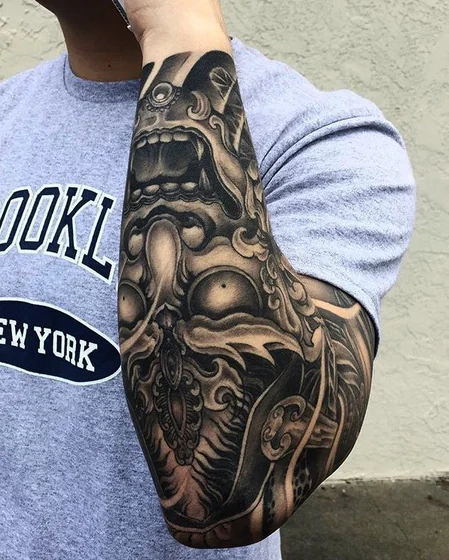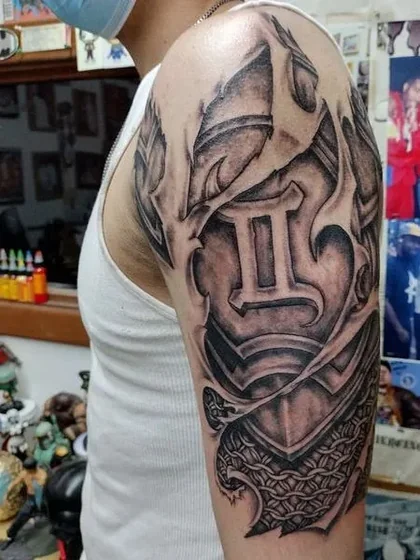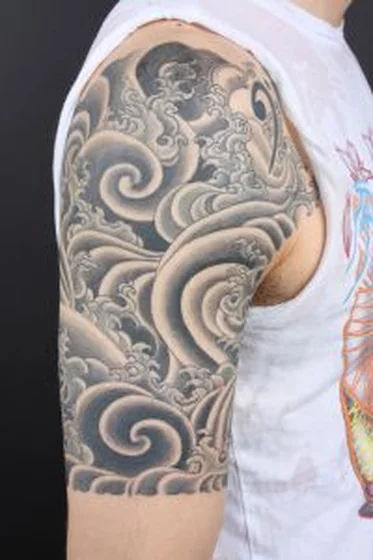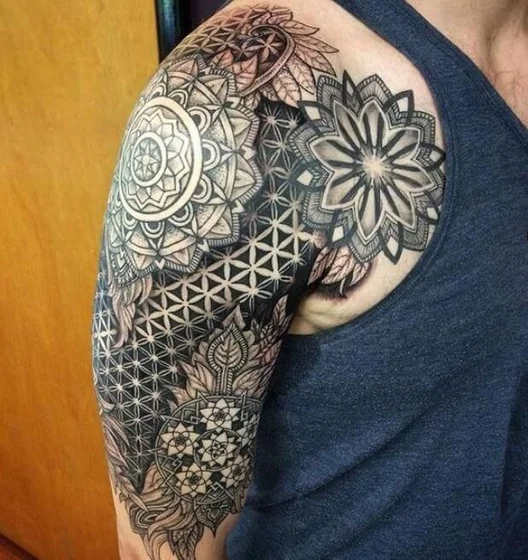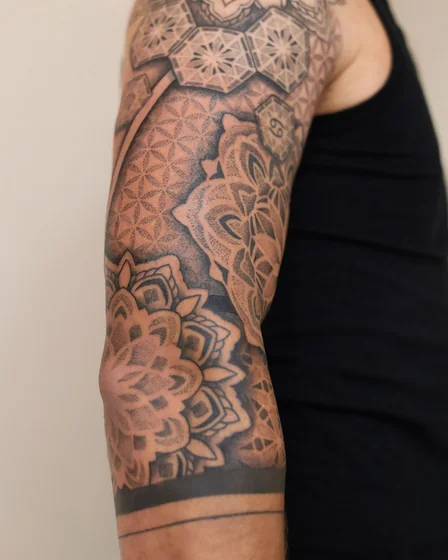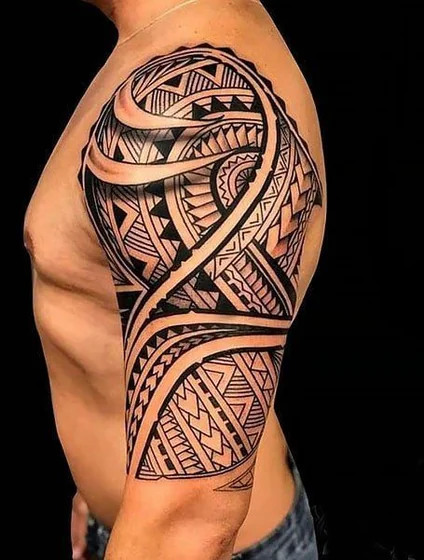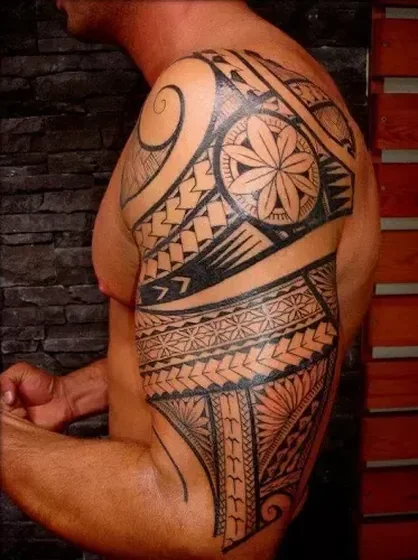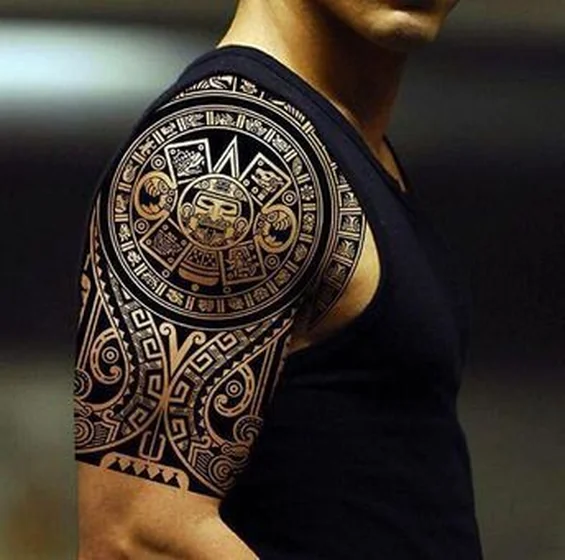Filters
Tattoo Ideas
Start Your Tattoo Design Journey
0Tattoos Designed This Week On Tatspark
Now in Beta — share your feedback and shape what's next.
Selecting Patterns That Enhance Masculine Physique
Your pattern choice should work with muscle structure, not against it. Tribal-inspired geometric bands follow the natural taper from shoulder to elbow, emphasizing arm definition during flexing. Biomechanical motifs that wrap around the bicep create dimension—gears and pistons appear to move beneath the skin when you lift or rotate your arm. Japanese cloud backgrounds (kumadori) fill negative space while maintaining masculine energy through bold line work.
Athletic builds gain most from designs that track muscle groups. Place primary focal points—skulls, predator faces, compass roses—on the outer bicep where they're visible during handshakes and casual conversation. Extend secondary elements like smoke, waves, or abstract shading down the forearm to guide the eye vertically. Avoid horizontal bands that cut the arm into sections; they shorten visual length and disrupt flow during movement.
Pattern Density and Professional Context
Heavy Blackwork vs. Detailed Illustrative vs. Minimal Line Patterns
- Heavy Blackwork: Maximum contrast and masculinity | Coverage: 60-80% solid ink | Professional Context: Difficult to soften or conceal—best for trades, creative industries, entrepreneurship
- Detailed Illustrative: Realistic imagery with depth and shading | Coverage: 40-60% with breathing room | Professional Context: Easier to frame as "art appreciation" in business casual environments
- Minimal Line Patterns: Geometric or single-needle work | Coverage: 20-40% with maximum negative space | Professional Context: Most versatile for corporate roles—reads as refined rather than rebellious
Heavy blackwork makes powerful first impressions but limits your ability to add contrasting pieces later. Illustrative work gives you the most storytelling range and ages gracefully. Minimal patterns work best for guys in client-facing finance or law roles where subtlety matters.
Sizing for Muscle Growth and Maintenance
If you're still building mass, communicate your lifting goals to your artist. Designs placed on rapidly growing muscle groups stretch and distort—a tight portrait at 160 pounds becomes elongated at 190. Request compositions with built-in expansion tolerance: organic shapes like smoke, water, or flora adapt better than rigid mechanical patterns or precise lettering.
Muscle definition changes how ink sits on your arm. Lean builds showcase fine detail work beautifully; every line remains crisp and readable. Bulkier physiques need bolder elements with thicker lines—intricate crosshatching disappears in the shadowed valleys between muscle bellies. Competitive bodybuilders should avoid inner elbow and inner forearm work; extreme vascularity during competition causes visual distraction from the design itself.
Session Strategy and Gym Schedule Coordination
Most masculine designs require 10-15 hours split across 2-4 sessions due to dense coverage and bold shading. Schedule outline work first—this establishes the framework and lets you test pain tolerance before committing to marathon shading sessions. Book your second session 3-4 weeks out; this allows full healing and gives you time to assess whether the composition needs adjustments.
Lifters must plan around training cycles. Halt upper body work for two weeks post-session—blood flow from pumped muscles pushes ink out of fresh wounds, causing patchy healing and requiring expensive touch-ups. Powerlifters preparing for meets should finish pieces at least six weeks before competition; peak week water manipulation affects skin elasticity and color saturation. Cardio is fine after day three, but wipe down equipment thoroughly and rewrap before leaving the gym.
See how feminine approaches prioritize different composition values for contrast in design philosophy.

